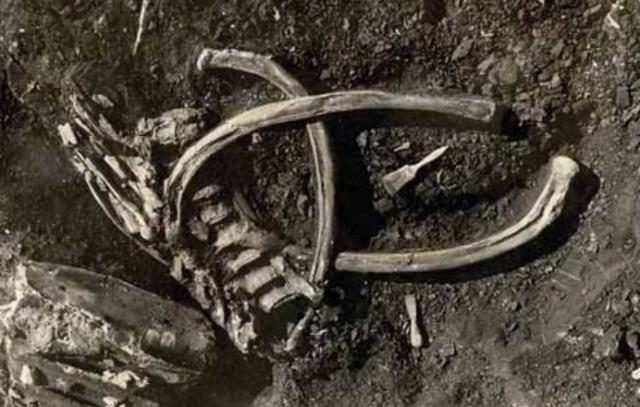Lignite extraction cycle in the Pietrafitta labour camp
Luigi Boldrini Paleontological Museo

Mid 20th century
Mining activity in Pietrafitta developed with the discovery of large lignite deposits. Lignite is a fossil, organic sediment and fuel of limited value, it retains a high degree of humidity. It was widely used throughout Italy until the 50s and 60s, for the production of electricity during the economic boom and, in the area of Piegaro, it was mostly sent to the blast furnaces of Terni for the production of steel. Pietrafitta lignite is part of the sedimentary succession of the Tavernelle Basin that surrounds the upper valley of River Nestore, they were most likely formed in a marshy environment and have a thickness of about 9 meters.
The lignite deposition probably begun following the tectonic movements that caused the elevation of the paleo-Nestore delta, and the consequent formation of environments partly characterised by stagnant freshwater that formed millennia ago when the area was an immense water basin where plant remains deposited on the bottom giving life to fossil coal. The fossil deposit constitutes a true and proper “window” on the ancient conformation of the area, made up of swamps, lakes and grasslands populated by numerous animal species, many of which have completely disappeared. Research and excavations have allowed hypothetical reconstructions of the paleoenvironments, of the flora and fauna that characterised the area about 1,500,000 years ago: there was certainly a lake surrounded by swamps with a lot of aquatic vegetation, vast grasslands and forests of broad-leaved shrubs.
Fossil documentation attests to the rich fauna made up of the inhabitants of the aquatic, grassland and forest ecosystems. The Palaeozoic remains may indicate a period of great changes in the local fauna, most probably due to climatic fluctuations that marked the transition of Lower Pleistocene to Middle Pleistocene. In 1958 a thermoelectric power plant was built, powered by lignite extracted in the area, which operated until 2001, when the deposit was exhausted.